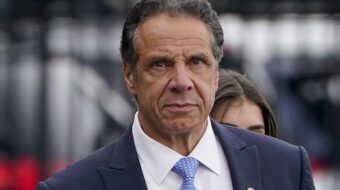Opponents, mainly Republicans, are using lies about the New Deal to ensure that Obama’s stimulus program does not work properly. Senate Minority Leader Mitch McConnell (R-Ky.) pompously announced that “the big-spending programs of the New Deal did not work.” Republican Sen. Richard Shelby (Ala.) dutifully chimed in, “If we look back, even to the New Deal, it’s not going to help employment.” Two historically ignorant economists, dismissing work that does not produce Wall Street profits, argued in the Wall Street Journal that “there was even less work on average during the New Deal than before FDR took office.”
Republican opposition to government spending is not new. In the Great Depression, the GOP fought against spending for jobs, public services, and economic regulations. The GOP falsely claims that the New Deal “did not work,” but does not mention that their votes kept it from completing its tasks.
At the time of the 1929 economic collapse, millions were on the streets looking for non-existent jobs; destitute farmers watched their piled-high crops go unsold; life savings were lost as banks closed their doors. President Herbert Hoover gave the typical Republican Party response. Hoover provided relief, but for the greedy, not for the needy. Giving aid to poor and working people would destroy their moral fiber, self-respect, and self-reliance.
Instead, he went to the aid of troubled financial institutions through his Reconstruction Finance Corporation, without explaining how this government trickle-down spending was not destructive of moral fiber. Hoover was willing to give government subsidies to the rich, but he was not willing to give necessary government help to the rest of the country. The New Deal, much maligned by Republicans and other opponents, was based on the democratic principle that government would be used to serve all of the people, instead of a chosen few.
The Works Progress Administration (WPA), the Public Works Administration (PWA), and the Tennessee Valley Authority (TVA) were three of the New Deal ways of serving the people. Under the WPA, hundreds of thousands of miles of highways, roads and streets were constructed; as were thousands of bridges, parks, public buildings, schools and hospitals; and hundreds of airports, playgrounds, swimming pools and recreation grounds.
Schools and recreation centers built under the WPA were used to a greater extent than ever before. Millions attended more than 100,000 classes in adult education, workers’ education and basic literacy. Books, paintings, plays and music produced by WPA writers, artists, actors and musicians won the praise of the country’s best critics.
The problem with the WPA was not that too much was spent for relief or that the work was useless. The problem was that not enough was spent. Republicans and Jim Crow Democrats had enough votes to cut funding, so that millions in need would get neither distress aid or work relief. A fully funded program would have cost much, but would have saved the nation many times more than its cost.
The PWA, the nation’s and the world’s largest construction program, provided funds for more than 26,000 construction projects in every one of the 48 states, and in all but three of the nation’s 3,071 counties. Among its projects were housing, hospitals, schools, flood control and construction of post offices and other public buildings. Because the courts ruled that the PWA lacked the power to condemn slums, the United States Housing Act of 1937 created the U.S. Housing Authority (USHA). The USHA provided low-cost housing, it moved people from areas of disease, crime and substandard housing to decent homes, and it created millions of jobs. However, like many other New Deal programs, PWA and USHA suffered from Republican Party opposition, and housing construction and slum clearance did not reach their intended goals.
Another impressive undertaking of the New Deal was the TVA, the program that provided regional development of the Tennessee Valley.
In the two prior administrations (both Republican), Presidents Coolidge in 1928 and Hoover in 1931 vetoed bills that would produce and distribute power and manufacture fertilizer for the Muscle Shoals, Ala., government plant located on the Tennessee River. Hoover said the government project would “break down the initiative and enterprise of the American people.” President Franklin Delano Roosevelt not only disagreed, but proposed to extend the project so that it would cover the entire Tennessee Valley. Congress approved, and the TVA began the greatest experience in regional planning in the nation’s history.
The TVA needed and hired engineers and construction workers to build storage and navigation dams on the Tennessee River and its tributaries and to produce electrical power for the region. Prior to the TVA, floods and droughts brought poverty to farmers throughout a region covering seven states with an area about the size of England and Scotland combined. The TVA constructed dams to solve the flood problems. The TVA’s engineers developed ways of preventing soil erosion and other processes that improved farm life.
Under the TVA, the region, ignored by private power companies, became the second largest producer of power in the U.S., and at half the private power company rates. The TVA performed other tasks also in impressive fashion. In addition to flood control, TVA improved water quality by reducing water pollution, and it managed lakes and public parks.
Its safety record on construction work, its labor relations and its general level of efficiency gave the lie to the charges that we should trust government operations to be poorly managed. However, if the lies of today’s Republican opponents are not exposed and rejected, the aim of the current New Deal, a fully-funded stimulus, will not be realized.
—–
Lou Incognito, retiree and social justice activist, lives Philadelphia.










